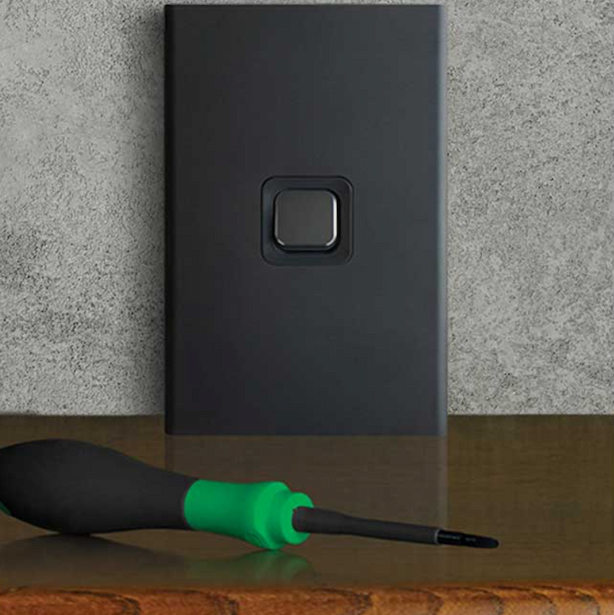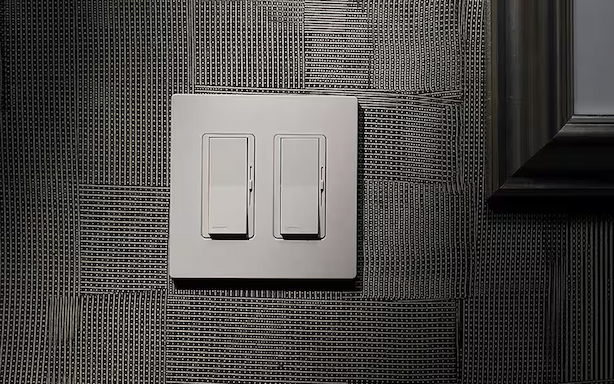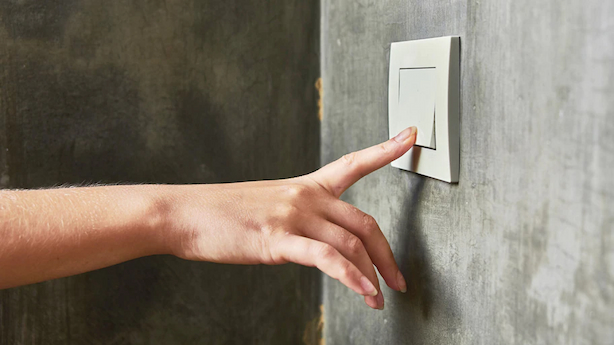Essential Guide to Switch Cover Plates
When it comes to home renovations and redecorating, it’s often the small details that get overlooked. Yes, you’ve already decided which wall to knock down, the furniture you’ll be throwing out and the light fixtures that go better in each room. But how many of us have thought about wall plates? These are the small covers that go around light switches and outlets. They might seem unnecessary at first glance, but play quite a few important roles, both in terms of styling and safety.
What do Wall Plates Do?

Wall plates go by a few names (switch covers, cover plates and outlet plates are most common) and have the basic task of protecting electrical wires that work the switches and outlets they cover. Behind each one, you’ll find a series of wires and mechanisms that essentially turn lights on or off and allow you to plug in appliances and devices. And they allow you to do this safely, without being exposed to hazards such as live wires and the risks of electrocution.
With the plate fitted, switches and outlets are also protected from harmful factors such as dust and moisture, which can lead to electrical faults like short circuits, and prove a neat styling solution to cover up what is essentially a ghastly hole in the wall. With the wide range of materials, finishes and textures, homeowners and renovators can choose the right cover plate that best suits the look they’re after. Electrical companies that also make switches, cabling and other supplies, have recognised how important wall plate covers are, so offer different lines and styles to go with different tastes.
When to Change the Wall Plate Covers in Your Home?

There are quite a few reasons you’ll want to go out with the old and in with the new. Plates and covers that have seen better days, are cracked, discoloured or just unsightly are a safety risk and won’t match any new additions to your home. Cracks in the plates allow dust and water to get in and can potentially cause an electrical fire or pose a safety risk to anyone using the switches or outlets. Burnt or charred covers and plates also signal electrical issues, usually frayed or faulty wiring inside. Here you not only need to remove and swap the covers but also get the switches and wiring checked before an accident occurs.
Choosing the Right Cover Plates – What’s on Offer

When shopping for new wall plate covers, designs, configurations, materials and finishes are the main things to look out for. Each cover plate needs to be right for the switch or outlet, house the number of included switches or sockets and be made of materials that are both durable and resistant to outside factors. The different colours, textures and finishes also mean variants that add a stylish touch to your home.
Wall Plate Designs and Configurations
Standard or decorator cover plate designs are the most common and offered in a range of styles. They have either rectangular or circular cutouts to fit switches, rounded or straight edges and either protrude or sit flush with the wall surface. They can also be found in architrave designs where space is tight or standard sizes housing one or more switches. If you’re thinking of additional wiring or switches in the future, consider using a blank wall plate.
Socket covers are often in a vertical plane, and have cutouts for the plug pins as well as the switches. These can additionally be offered with USB charging points in different arrangements. For TVs, internet ports, media boxes and home theatre systems, the same companies have matching media cover plates to neatly house multiple sockets and plugs and do a better job in managing straddling cables.
Lastly, consider the number of switches or gangs the plate cover needs to house. Most residential homes have cover plates in a 1, 2, 3, or 4-gang layout and this meets most needs. For commercial or industrial spaces like offices and warehouses though there are also plate configurations with up to 8 separate gangs.
Materials

The type of materials that go into the cover plate has a big say in overall looks, and how long the plates will last. Materials also determine whether cover plates suit the environment they work in and end prices. The most common choice is cover plates made of Polycarbonate plastics, which are resistant to fading or deformation in switches exposed to sunlight, and display good performance against moisture. Thermoset plastic covers work well in areas with high temperatures, and are also good against corrosives and chemicals. The tough build also warrants they last. Similar are covers optioned in Nylon. These are good for high-impact spaces, so won’t collect scratches or major damage.
Metal varieties often go with high-end fixtures and are common in more upscale wall plate lines. Stainless steel is the most widespread option here and is good for frequent or heavy-duty use, stands up against dust and is easy to clean. Brass offerings work best in areas with high humidity and also older fixtures in restored architectural homes of the past.
Colours, Textures and Finishes
Lastly, choose the colour of the wall plate, the texture and how it’s finished. White and black (and different shades of grey) have been around for ages, but palettes and colour options are increasing by the day, so there’s a good chance you’ll find what you’re looking for. Unorthodox choices include blue, red, green, almond and others in plastic wall plates, as well as gold, bronze, nickel, chrome and brushed metal plates.
Textures and finishes determine the overall feel and look. Go with matte finishes for a subdued look or gloss plates so they stand out. Also choose between smooth, polished, brushed, or embossed textures to match wall paint and other elements in the room.






